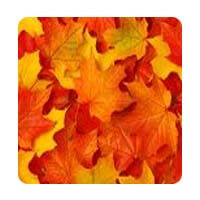
The warm days and cool nights of autumn will soon arrive along with those beautiful leaves that we all enjoy so much. As majestic as those trees look while the leaves are still attached, what do we do when leaves begin falling to the ground, covering the landscape?
Many of us have happy childhood memories of burning leaves. But is that really the best alternative?
Many municipalities now either ban or discourage the burning of yard waste. Before you burn, check with local authorities or your state’s department of natural resources to see whether a permit is required. If you live in an area prone to forest or wildfires, you may have “red flag” burning restrictions in place.
Leaf burning contributes to air pollution, health risks for some, and fire hazards:
- Smoke from burning leaves contains toxic or irritating particles and gases that can increase the risk of respiratory infection.
- Carbon monoxide can result from incomplete burning, especially when leaves are wet. Inhaled carbon monoxide is absorbed into the bloodstream, where it can reduce the amount of oxygen that red blood cells carry.
- Local fire departments can attest to house fires that have resulted due to unsafe burning of leaves.
Fortunately, there are some very good alternatives to traditional leaf burning. You may be fortunate to have a municipality that will pick up the raked leaves if left at the curb, either in a pile or in appropriate bags. Check with your city or county government for details.
Another great option is to compost the leaves yourself or to use the leaves as mulch around garden and landscape beds.
Of course, you also have the option of just mulching the leaves with the lawnmower. They make an excellent soil conditioner. Today’s mowers do an excellent job of shredding the leaves into very small pieces.
After you’re done with your yard work, you can always enjoy a safe fire in your fireplace!